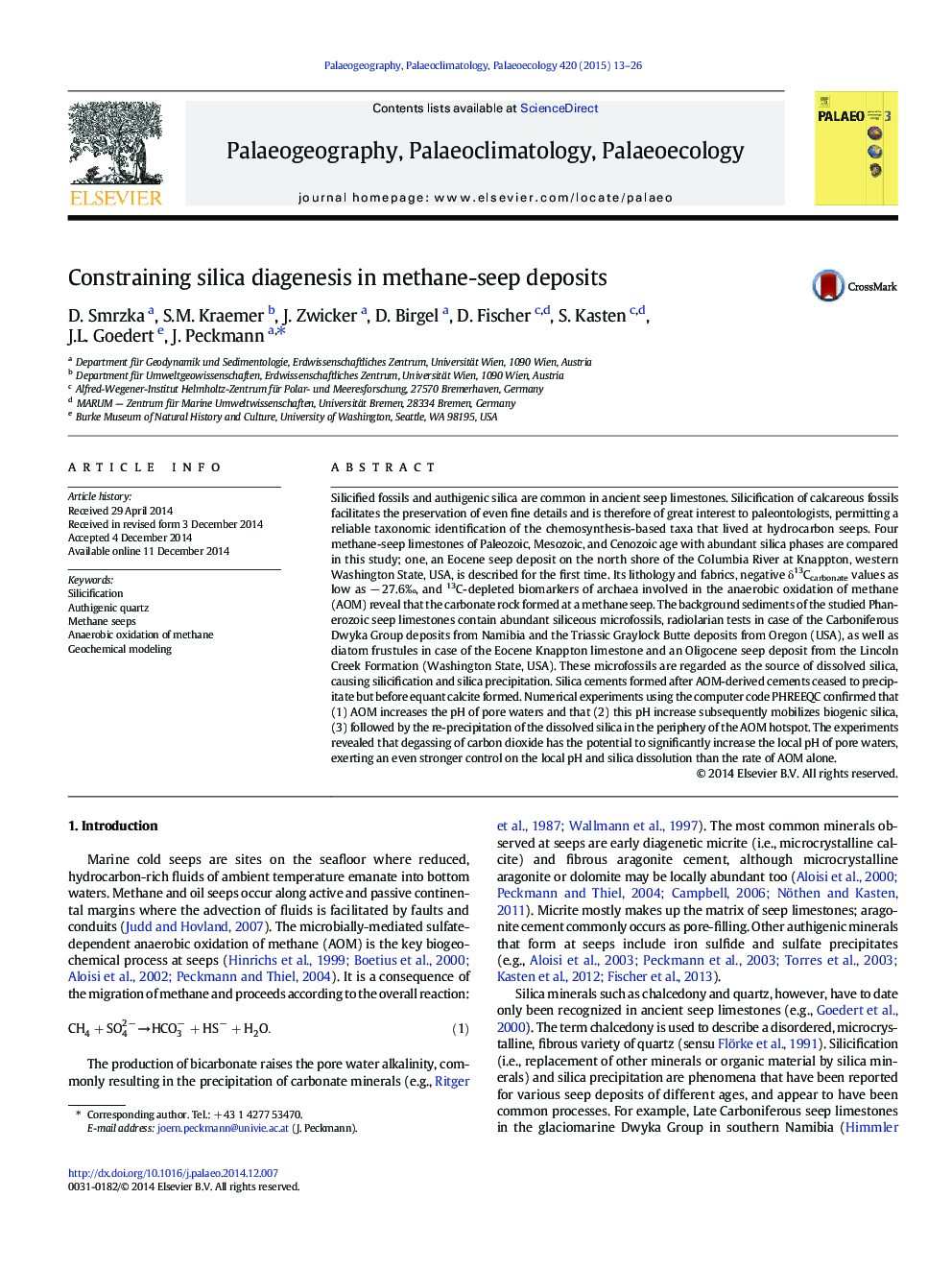| کد مقاله | کد نشریه | سال انتشار | مقاله انگلیسی | نسخه تمام متن |
|---|---|---|---|---|
| 4466053 | 1622170 | 2015 | 14 صفحه PDF | دانلود رایگان |
• Silicification at seeps facilitates the preservation of calcareous fossils.
• Siliceous microfossils are the source of silica.
• Carbon dioxide degassing favors pH increase leading to silica dissolution.
• Subsequent reprecipitation of silica in the periphery of the AOM hotspot
Silicified fossils and authigenic silica are common in ancient seep limestones. Silicification of calcareous fossils facilitates the preservation of even fine details and is therefore of great interest to paleontologists, permitting a reliable taxonomic identification of the chemosynthesis-based taxa that lived at hydrocarbon seeps. Four methane-seep limestones of Paleozoic, Mesozoic, and Cenozoic age with abundant silica phases are compared in this study; one, an Eocene seep deposit on the north shore of the Columbia River at Knappton, western Washington State, USA, is described for the first time. Its lithology and fabrics, negative δ13Ccarbonate values as low as − 27.6‰, and 13C-depleted biomarkers of archaea involved in the anaerobic oxidation of methane (AOM) reveal that the carbonate rock formed at a methane seep. The background sediments of the studied Phanerozoic seep limestones contain abundant siliceous microfossils, radiolarian tests in case of the Carboniferous Dwyka Group deposits from Namibia and the Triassic Graylock Butte deposits from Oregon (USA), as well as diatom frustules in case of the Eocene Knappton limestone and an Oligocene seep deposit from the Lincoln Creek Formation (Washington State, USA). These microfossils are regarded as the source of dissolved silica, causing silicification and silica precipitation. Silica cements formed after AOM-derived cements ceased to precipitate but before equant calcite formed. Numerical experiments using the computer code PHREEQC confirmed that (1) AOM increases the pH of pore waters and that (2) this pH increase subsequently mobilizes biogenic silica, (3) followed by the re-precipitation of the dissolved silica in the periphery of the AOM hotspot. The experiments revealed that degassing of carbon dioxide has the potential to significantly increase the local pH of pore waters, exerting an even stronger control on the local pH and silica dissolution than the rate of AOM alone.
Journal: Palaeogeography, Palaeoclimatology, Palaeoecology - Volume 420, 15 February 2015, Pages 13–26
